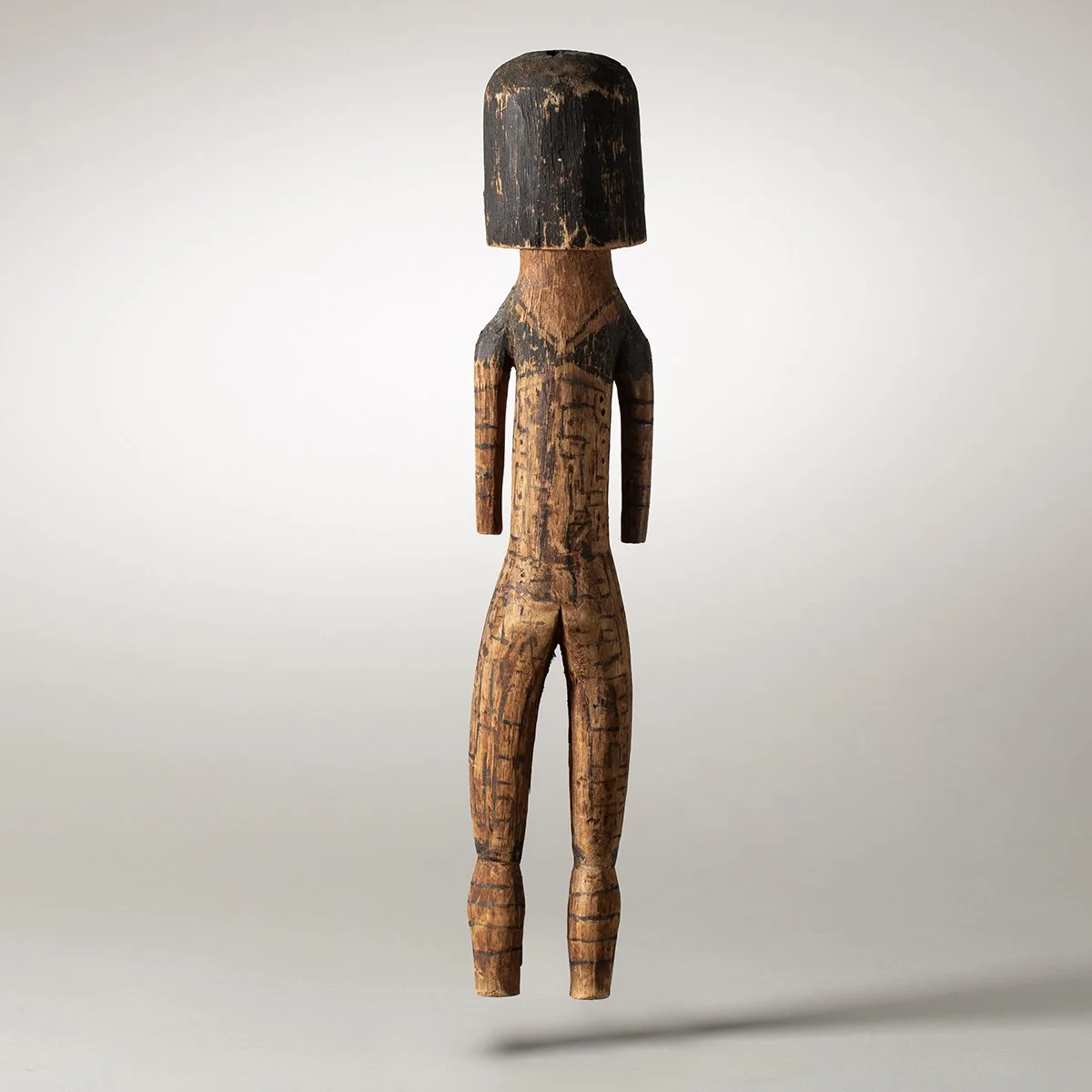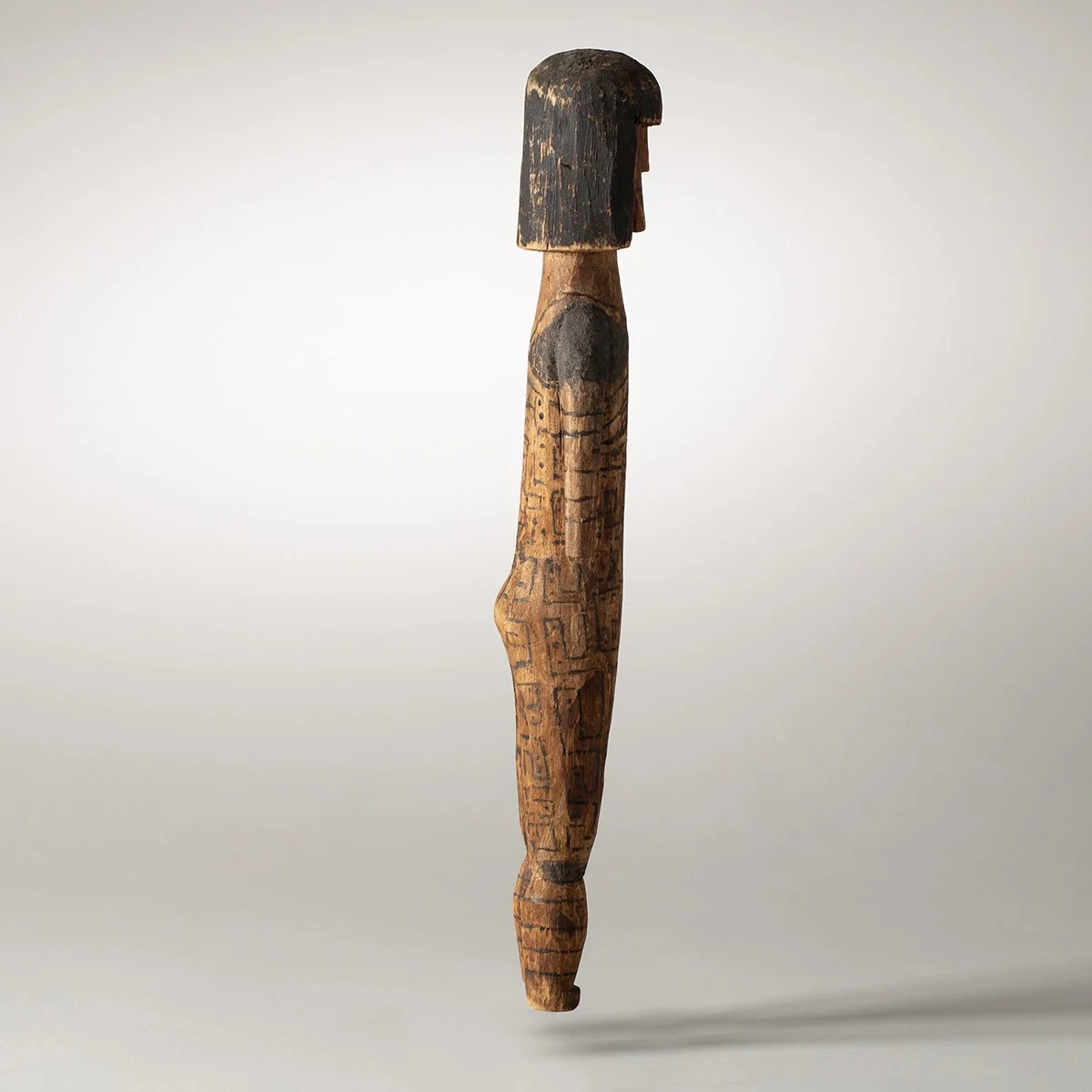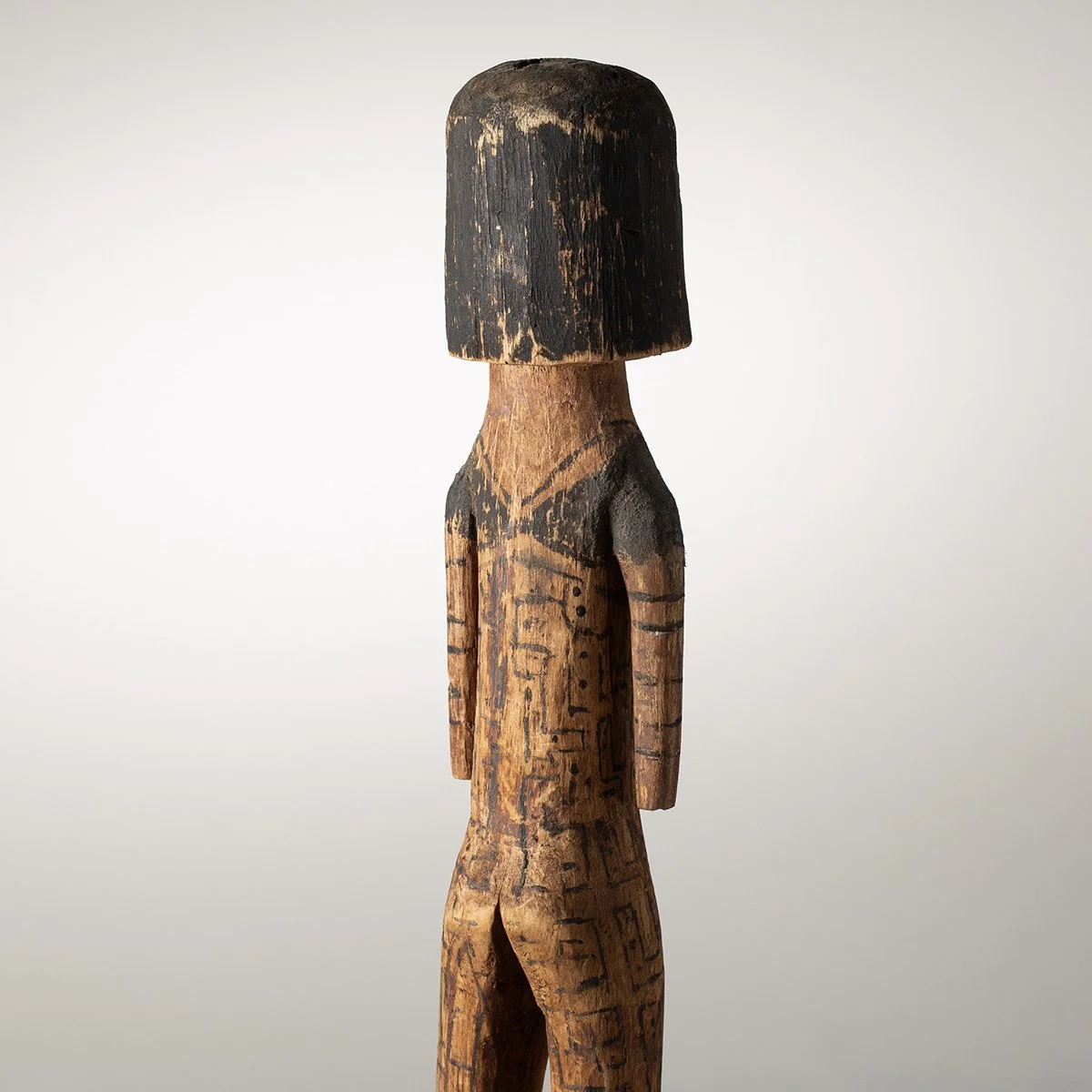 Image 1 of 6
Image 1 of 6

 Image 2 of 6
Image 2 of 6

 Image 3 of 6
Image 3 of 6

 Image 4 of 6
Image 4 of 6

 Image 5 of 6
Image 5 of 6

 Image 6 of 6
Image 6 of 6







Rare Karaja Tattooed Figure
Peru
19th Century
Height 16 3/8"
Provenance: Santa Fe Trade
The Shipibo of the Ucayali River, a southern tributary of the Upper Amazon in Peru, are well known for their pottery but sculptures such as this are very rarely seen and are ceremonial in nature.
Shipibo art appears in many forms most primarily pottery and are covered with intricate, bilaterally symmetrical geometric designs in a baroque tri level style.The upper level, executed first, consists of broad form lines in rectilinear (pontëquënëya) and curvilinear (mayaquënëya) patterns; it is enhanced by secondary parallel fine lines and tertiary intricate filler elements. Each design is unique, and insightful artistry is highly valued. The artist’s inspiration is aided by covering her eyelids with the leaves of a colorfully veined iponquënë plant—named after a small but complexly patterned armor-headed catfish—in an effort to absorb their intricate tracery, as well as by dreams and visions. The designs originally derived from the hallucinogenic visions of male and rare post-menopausal female shamans using ayahuasca (or nishi), a psychotropic tea derived from the Banisteriopsis caapi vine, and strong tobacco (romë rao).
In mythic times these patterns covered everything—the sky, trees, huts, people, animals, et cetera—in a continuous tissue of design. But due to the misdeeds of failed proto humans, this idyllic union ruptured and differentiated into floating, superimposed planes: Nëtë ŝhama (the sky world), Mai (the earth world), and Jënë ŝhama (the subaquatic underworld). Simultaneously, periodicity (day and night, or time), mortality, and speciation appeared.7 And the geometric lineaments ruptured. Now they appear only on specific design fields, such as the upper parts of fineware pottery, people’s faces, or the blades of war clubs. All these designs are pre-existent; the artist has only to grasp and fix them in her mind (shinan picotai, “the thoughts emerge”), lay them over the design field, and cut where they match that field, letting the rest of the design fade back into invisibility. The visible design remains as a window into the vast reticulate intricacy of the universe. Rare.
Peru
19th Century
Height 16 3/8"
Provenance: Santa Fe Trade
The Shipibo of the Ucayali River, a southern tributary of the Upper Amazon in Peru, are well known for their pottery but sculptures such as this are very rarely seen and are ceremonial in nature.
Shipibo art appears in many forms most primarily pottery and are covered with intricate, bilaterally symmetrical geometric designs in a baroque tri level style.The upper level, executed first, consists of broad form lines in rectilinear (pontëquënëya) and curvilinear (mayaquënëya) patterns; it is enhanced by secondary parallel fine lines and tertiary intricate filler elements. Each design is unique, and insightful artistry is highly valued. The artist’s inspiration is aided by covering her eyelids with the leaves of a colorfully veined iponquënë plant—named after a small but complexly patterned armor-headed catfish—in an effort to absorb their intricate tracery, as well as by dreams and visions. The designs originally derived from the hallucinogenic visions of male and rare post-menopausal female shamans using ayahuasca (or nishi), a psychotropic tea derived from the Banisteriopsis caapi vine, and strong tobacco (romë rao).
In mythic times these patterns covered everything—the sky, trees, huts, people, animals, et cetera—in a continuous tissue of design. But due to the misdeeds of failed proto humans, this idyllic union ruptured and differentiated into floating, superimposed planes: Nëtë ŝhama (the sky world), Mai (the earth world), and Jënë ŝhama (the subaquatic underworld). Simultaneously, periodicity (day and night, or time), mortality, and speciation appeared.7 And the geometric lineaments ruptured. Now they appear only on specific design fields, such as the upper parts of fineware pottery, people’s faces, or the blades of war clubs. All these designs are pre-existent; the artist has only to grasp and fix them in her mind (shinan picotai, “the thoughts emerge”), lay them over the design field, and cut where they match that field, letting the rest of the design fade back into invisibility. The visible design remains as a window into the vast reticulate intricacy of the universe. Rare.

